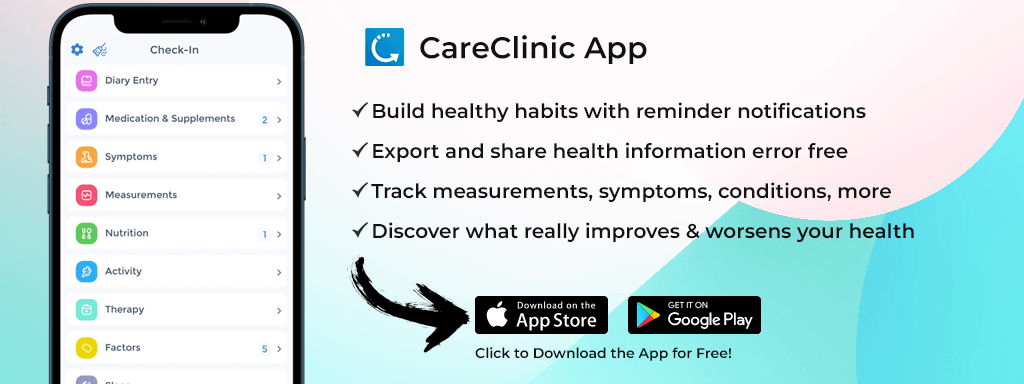
If you’re like most people, you probably find yourself wishing you could think faster at least occasionally. Whether you’re trying to solve a complex problem or just keep up with a fast-paced conversation, being able to think quickly and efficiently can be a real asset.
Fortunately, there are several things you can do to train your brain to think faster. In this blog post, we’ll explore 10 of the most effective techniques for improving your thinking speed and accuracy. So if you’re ready to start thinking faster, read on![1][2][3][4][5][6][7][1][2]
Understand your triggers – what makes you think faster or more slowly
The power of understanding your triggers is vast. Taking the time to analyze how certain stimuli can affect your thought process is an incredibly useful tool when it comes to improving mental health and general productivity. For example, if you find yourself feeling lethargic or overloaded, perhaps it’s because you need a change of scenery, a different kind of music playing in the background, or maybe just a break from social media? On the other hand, if you need help getting motivated or refocusing on something important, try writing down your ideas with pen and paper instead of typing them out on a computer. Your triggers could be anything from sound, scent, temperature to color tones, or visual patterns. You must experiment constantly to figure out what works best for you. Don’t be afraid to make tweaks and adjustments as needed![8][3][4]
Be aware of your environment – are you in a place that is conducive to thinking quickly and efficiently
Deleted: In this fast-paced world, it is more important than ever to be mindful of your environment and how it impacts your thinking. Whether you work in an office, a café or at home, it’s essential to ensure that the space around you provides an atmosphere for productive thoughts. Try asking yourself whether the temperature is comfortable, whether the noise level allows you to concentrate and whether there are any visual distractions. If not, look for ways to improve your environment: replace bright overhead lights with natural sunlight, limit conversations with colleagues or take your laptop outside if possible. Taking these small steps can make a big difference in helping to create a space conducive to thoughtful problem-solving and quick decision-making.[5][6][7]
Master Chunking: Think Faster by Breaking It Down
If you want to boost cognitive speed, reduce overwhelm, and learn anything faster, start with chunking. It is one of the most effective tools used by memory athletes, medical students, and elite performers. Chunking means taking large volumes of data and breaking them into smaller, meaningful units.
Instead of memorizing 20 random facts, group them into 4 themes with 5 points each. Your brain is wired to store patterns, not scattered facts. Cognitive science shows that chunking can improve recall by up to 60% and cut learning time in half.
- Helps you retain information under pressure
- Improves performance in meetings, interviews, and exams
- Reduces decision fatigue by organizing thoughts fast
This technique is a key element in the “Think Faster Talk Smarter” book and podcast series. When you’re overwhelmed, pause. Group. Label. Process. Then move. It’s not just about learning faster — it’s about operating at a higher level.[8][9]
Use Mnemonics to Lock in Knowledge and Speak with Confidence
Mnemonics are your brain’s cheat codes. From acing a certification to recalling talking points mid-presentation, these mental shortcuts help you retain and retrieve information with zero hesitation.
Some examples:
- Acronyms (e.g., SMART for goals: Specific, Measurable, Achievable, Relevant, Time-bound)
- Rhymes (e.g., “I before E except after C”)
- Memory palaces (visualize placing ideas in physical locations)
According to research in the Journal of Experimental Psychology, using mnemonic devices can increase learning retention by up to 150% compared to rote memorization. These strategies activate more areas of the brain, creating stronger and faster recall pathways.
If you want to think faster and talk smarter, this is a must-have tool. You will recall names, facts, frameworks — even under stress — like your brain has its own search engine.[10][11]
Make Connections: Link New Info to What You Already Know
Learning is not stacking bricks — it’s wiring circuits. Making connections between new and known information accelerates comprehension and improves retention.
Think of it like a puzzle:
- New info = new puzzle piece
- Existing knowledge = the frame
- Connections = how fast you can lock the piece in place
Example: learning about neurotransmitters? Link dopamine to motivation, serotonin to mood. These associations make information “stickier.”
A study by the American Psychological Association found that learners using associative techniques outperformed others by 40% in retention and application. This is how experts in law, medicine, and software scale their learning without burnout.
This mirrors a core lesson from the “Think Faster and Talk Smarter” book: mental agility is about connecting ideas, not memorizing more. Build relational thinking, and your speed of insight multiplies.[12][13]
Simplify to Amplify: Clarity Is a Performance Multiplier
Complexity kills speed. Whether you’re solving problems or crafting strategy, clarity is your advantage. Simplify your thoughts, and you will execute faster than 90% of people.
Here’s a 4-step framework:
- Write down the task or idea
- Break it into 3 to 5 logical components
- Cut what is irrelevant or confusing
- Define the next clear action
A 2022 study from the University of Toronto showed that people who used structured simplification frameworks made decisions 37% faster with 23% greater accuracy.
“Think Faster Talk Smarter” teaches this directly: mental speed is not a gift — it is a byproduct of clarity. If you reduce clutter, remove mental lag, and focus on signal over noise, you create space to operate at peak performance.
This works in business strategy, health decisions, even daily conversations. Simplicity scales. Confusion burns time.[14]
Apply These Thinking Techniques in Daily Life
These mental models are not just theory — high performers field-test them. Use them to sharpen decision-making, boost memory, and navigate high-pressure environments.
Here’s a comparison of when and how to use each technique:
| Technique | When to Use | Example | Benefit |
|---|---|---|---|
| Chunking | When learning complex topics or building frameworks | Divide a 10-slide presentation into 3 core themes | Reduces overload and boosts understanding |
| Mnemonics | When memorizing facts, names, processes | Use acronyms like RICE for injury care (Rest, Ice, Compress, Elevate) | Faster recall and stronger memory under pressure |
| Connections | When integrating new knowledge | Link CRPS symptoms to other chronic pain markers you know | Enhances pattern recognition and applied thinking |
| Simplification | When making decisions or problem-solving | Reduce a problem into 3 variables to isolate the core issue | Clarity, speed, and more confident action |
Conclusion: Train Your Mind to Think Fast and Win
You don’t need a higher IQ to get ahead. You need better cognitive systems. These four methods — chunking, mnemonics, connection-making, and simplification — are the foundation of faster thinking and smarter speaking.
Next time you feel overwhelmed:
- Chunk the task into small parts
- Attach mnemonic anchors
- Relate new info to what you already understand
- Eliminate the noise and simplify the core
This is the exact framework behind the “Think Faster Talk Smarter” movement. Master it and you’ll handle pressure, speak with confidence, and execute faster than those around you.
Want to go deeper? Check out summaries, reviews, or the audiobook version of the “Think Faster Talk Smarter” book — and start using your brain like a high-performance machine.[19][20][21][22]
References
- “How to Improve Thinking Speed: Strategies for a Sharper Mind – CYMBIOTIKA”. https://cymbiotika.com/blogs/health-hub/how-to-improve-thinking-speed-strategies-for-a-sharper-mind
- “Think Faster, Learn Quicker: Techniques to Supercharge Your Brain’s Processing Speed – Development Pill”. https://developmentpill.com/think-faster-learn-quicker-techniques-to-supercharge-your-brains-processing-speed/
- “Attention restoration theory”. https://en.wikipedia.org/wiki/Attention_restoration_theory
- “Handwriting Shows Unexpected Benefits Over Typing”. https://www.psychiatrist.com/news/handwriting-shows-unexpected-benefits-over-typing/
- “How Temperature and Lighting Impact Our Productivity”. https://buffer.com/resources/the-science-of-how-room-temperature-and-lighting-affects-our-productivity/
- “The Influence of Environmental Factors on Cognitive Skill Performance in Assessment Settings”. https://psicosmart.net/blogs/blog-the-influence-of-environmental-factors-on-cognitive-skill-performance-in-assessment-settings-191608
- “How environmental factors can affect productivity in the workplace”. https://workinmind.org/2019/08/07/how-environmental-factors-can-affect-productivity-in-the-workplace/
- “What Is Chunking, and How Can It Improve Memory? | Coursera”. https://www.coursera.org/articles/chunking
- “Enhancing Learning and Retention through Chunking Information – Academia Today”. https://academiatoday.com/chunking-information/
- “Durable memories and efficient neural coding through mnemonic training using the method of loci – PubMed”. https://pubmed.ncbi.nlm.nih.gov/33658191/
- “Mnemonic training reshapes brain networks to support superior memory – PMC”. https://pmc.ncbi.nlm.nih.gov/articles/PMC5439266/
- “Active learning”. https://en.wikipedia.org/wiki/Active_learning
- “Matt Abrahams's Think Faster, Talk Smarter: Book Overview | Shortform Books”. https://www.shortform.com/blog/matt-abrahams-think-faster-talk-smarter/
- “Think Faster, Talk Smarter by Matt Abrahams – Summary”. https://www.shelfhelp.blog/think-faster-talk-smarter-by-matt-abrahams-summary/
- “Unlocking the power of chunking: Reducing cognitive load | Pearson Schools”. https://www.pearson.com/en-au/schools/insights-news/unlocking-the-power-of-chunking-reducing-cognitive-load/
- “Exploring the Role of Mnemonics in Psychology: Memory Techniques and Enhancement – Listen-Hard”. https://listen-hard.com/psychological-research-and-methodology/mnemonics-psychology-memory-techniques/
- “memory techniques -Mnemonics acronyms, chunking”. https://thepeakperformancecenter.com/educational-learning/learning/memory/memory-techniques/
- “Simplifying Complex Ideas: Memory Techniques Explained | Said Hasyim”. https://www.saidhasyim.com/post/peak-brain-plasticity/simplifying-complex-ideas-memory-techniques-explained/
- “Chunking (psychology)”. https://en.wikipedia.org/wiki/Chunking_%28psychology%29
- “Book review of Think Faster, Talk Smarter by Matt Abrahams”. https://www.bookpage.com/reviews/think-faster-talk-smarter-book-review/
- “Amazon.com: Think Faster, Talk Smarter: How to Speak Successfully When You're Put on the Spot (Audible Audio Edition): Matt Abrahams, Matt Abrahams, Simon & Schuster Audio: Books”. https://www.amazon.com/Think-Faster-Talk-Smarter-Successfully/dp/B0BW2DNZHX
- “Amazon.com: Think Faster, Talk Smarter: How to Speak Successfully When You're Put on the Spot eBook : Abrahams, Matt: Kindle Store”. https://www.amazon.com/Think-Faster-Talk-Smarter-Successfully-ebook/dp/B0BW9VP72Q


